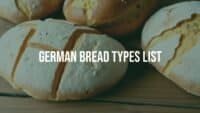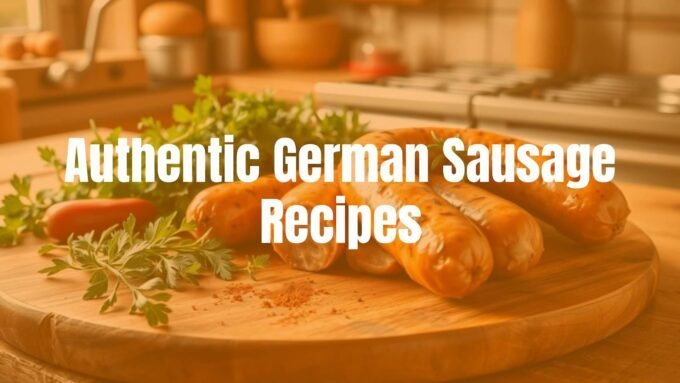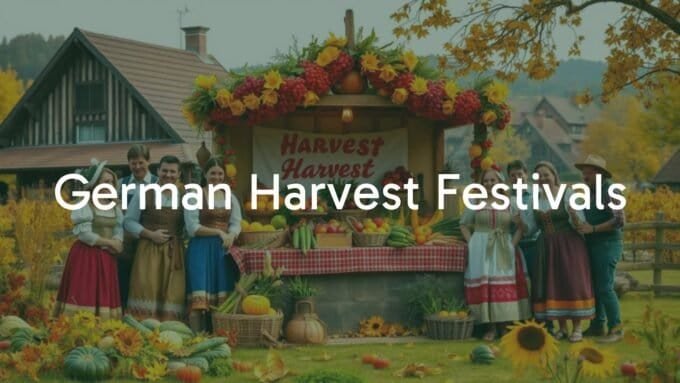Traditional German breakfasts focus on fresh ingredients, many kinds of bread, and a mix of savory and sweet foods. Unlike quick on-the-go meals, the German Frühstück on weekends is slow and relaxed, meant to keep you going for hours. A common saying is, “Eat breakfast like a king, lunch like a nobleman, and dinner like a pauper.” This style of eating rests on variety and care for freshness, from bakery breads to local meats, cheeses, and homemade spreads.
What Makes German Breakfast Foods Traditional?
A classic German breakfast reflects long-held habits and shared meals. It values good ingredients and a strong start to the day. On weekdays it can be simple, but the weekend Sonntagsfrühstück often turns into a big spread, showing how important this meal is in daily life.

German Breakfast Culture and History
For many families, breakfast is more than a quick bite; it’s time together. Weekends and holidays often mean long meals with a full table. The tradition of filling the table edge to edge is common and even a running joke among Germans. In the past, the main hot meal was at midday, so a big breakfast helped people get through the morning. Today, even if some grab food on the way to work, the long weekend breakfast is still loved.
Regional Variations Across Germany
Breakfast habits change from place to place across the country. There is a core set of foods, but local items add their own touch. In southern areas like Bavaria and Baden-Württemberg, pretzels (Brezeln) are common, often with sweet mustard and sometimes wheat beer. In the north near the sea, you will often find fish, such as marinated herring or smoked salmon. These differences show how varied German food can be, so a “traditional German breakfast” can look different depending on where you are.
| Region | Typical Breakfast Items |
|---|---|
| Bavaria & Baden-Württemberg | Pretzels, sweet mustard, Weisswurst (often before noon), wheat beer |
| Northern Germany | Smoked salmon or trout, marinated herring, Rollmops |
| Nationwide basics | Brötchen, cold cuts, cheeses, jams, eggs, fruit |
What Foods Are Found in a Traditional German Breakfast?
A German breakfast offers many choices, both savory and sweet. Everyone builds their own plate from the shared dishes on the table.
Classic German Bread and Rolls (Brötchen, Brot)
Fresh bread is the star. Germany has hundreds of bread types and countless rolls. Brötchen (small crusty rolls) come in many styles:
- Plain white (Weiße Brötchen)
- Poppy seed or sesame (Mohnbrötchen)
- Sourdough and spelt (Dinkelbrötchen)
- Whole wheat (Vollkornbrötchen)
- Raisin rolls (Rosinenbrötchen)
Hearty loaves like Bauernbrot (rye and wheat) and dark pumpernickel are common too. Freshness matters, and many people stop by the bakery each morning.

Cold Cuts: Wurst, Ham, and Other Meats
The savory side often includes a plate of sliced meats, such as:
- Salami and prosciutto
- Black Forest ham (Schwarzwälder Schinken)
- Liverwurst (Leberwurst) for spreading
Grocery deli counters offer a wide range, so there is something for everyone.
Cheeses Typically Served
Cheese is a key part of the spread. You will see both hard and soft types, for example:
- Firm slices: Gouda, Emmentaler, Gruyère (often called Geyerzer)
- Soft cheeses: quark, sometimes mixed with herbs or tomatoes
Bavaria alone makes hundreds of cheeses, often from nearby farms, which keeps flavors fresh and local.
Eggs and Egg Dishes
Boiled eggs are common. Many like yolks that are set on the outside but soft in the middle, with careful timing. Eggs often sit in small cups and are eaten with plastic or melamine spoons. Omelets, scrambled eggs, and fried eggs are also popular now, especially on weekends or at cafés. Add-ins can include bacon, onions, or breakfast sausage.
Fish and Seafood Options
In the north, fish is a regular sight. Choices include marinated herring, Rollmops (pickled herring), and shrimp salad (Krabbensalat). Modern spreads might add smoked trout or smoked salmon on a white roll with horseradish or a creamy mustard sauce for a light, savory bite.
Sweet Spreads: Jam, Honey, and Nutella
Sweet options balance the savory plates. Homemade jams are very popular, such as sour cherry, blackcurrant, rosehip, and elderberry. Honey, especially local forest honey (Waldhonig), may even come straight from the comb. Nutella and other chocolate spreads are loved by kids and adults alike.
Fresh Fruits and Vegetables
Fresh produce adds color and crunch. Common fruits include strawberries, raspberries, red currants, mangoes, grapes, and kiwis. Sometimes there is a fruit compote (Früchtekompott). Vegetables usually include sliced cucumbers, tomatoes, and radishes.
Muesli, Cereals, and Yogurt
Muesli is a frequent choice, either alone or with other items. It mixes rolled oats, grains, seeds, nuts, and dried or fresh fruit, and is served with yogurt, kefir, or milk. Granola and cornflakes appear too, though many pick muesli for its hearty feel.
Traditional German Sausages (Weisswurst, Mettwurst, etc.)
Some sausages are tied to certain areas. In Bavaria, Weisswurst (white sausage) is classic. It is made from veal and pork back bacon with parsley, onions, and lemon, and is usually eaten before noon with sweet mustard and a pretzel, sometimes with wheat beer. In other places, a Mettbrötchen-a roll topped with seasoned raw minced pork and onion-is a local favorite.
Traditional German Breakfast Beverages
No breakfast is complete without drinks. German tables offer choices for every taste, from coffee to tea to juices.
Coffee and Variations
Coffee is the most common breakfast drink for adults. Many enjoy a regular brew with milk or condensed milk. Drinks like cappuccinos are also popular, especially at cafés. The smell of fresh coffee is part of the morning mood.
Popular Tea Choices
Tea also has a steady place, especially black tea. In areas like Ostfriesland in the north, strong black tea is a long-loved habit, likely linked to nearby British tea culture. Herbal teas are common too, especially for kids or anyone avoiding caffeine.
Other Common Drinks (Cocoa, Juice, Milchkaffee)
Beyond coffee and tea, you will often find:
- Hot cocoa for children
- Fresh orange juice and apple juice
- German multivitamin juices, which are mostly fruit-based
- Milchkaffee, a milky coffee similar to a latte
Hotel buffets sometimes add sparkling wine (Sekt) and a corner for fresh vegetable juices for special mornings.

How to Set a Traditional German Breakfast Table
Setting the table is part of the experience, especially on Sundays. It is about comfort, warmth, and easy access to everything.
Typical Tableware and Serving Traditions
Many homes set the table with care. Families may use special tablecloths and breakfast plates, along with matching coffee cups and saucers. Egg cups are handy for soft-boiled eggs, and small melamine teaspoons are common. Flax linen napkins and candles add to the cozy (Gemütlichkeit) feeling. Bread often sits in a wicker basket lined with a cloth to keep rolls fresh.
Order and Presentation of Foods
Foods are usually placed buffet-style so everyone can pick what they like. Common touches include:
- Cheese offered as slices and wedges
- Cold cuts arranged neatly on platters
- Spreads served in small bowls or jars
- Fruit laid out on platters; honey may come straight from the comb
The aim is a bright, inviting table that makes it easy to eat slowly and enjoy the meal.
Regional and Seasonal Breakfast Specialties in Germany
Local food culture and the time of year shape what appears on the breakfast table, adding special items and flavors.
Bavarian Breakfast: Weisswurst and Pretzels
In Bavaria in the south, Weisswurstfrühstück is well known. The main item is Weisswurst, a gentle-tasting white sausage made from veal and pork back bacon with parsley, onions, and lemon. The sausages are warmed gently and served in the hot water from the pot. People usually eat them before noon, a habit from the days before home fridges. Soft pretzels (Brezn) and sweet mustard go with them, and many enjoy a wheat beer (Weissbier) too.

Northern German Smoked Fish Traditions
Along the northern coast, seafood fits right in. Smoked salmon and smoked trout are common next to bread and rolls. Marinated herring and Rollmops (pickled herring fillets rolled with fillings) are also popular. People often eat these on crusty rolls, sometimes with horseradish or a creamy mustard sauce.
Seasonal Variations and Festive Breakfasts
Breakfast changes with the seasons. Summer brings berries, cherries, and currants. In autumn, apples and plums might be served fresh or cooked into compotes. Holidays add special breads: Osterkranz (a sweet braided bread) for Easter, and Stuten, a rich sweet bread, at Christmas. These treats give the table a holiday feel.
How to Create a Traditional German Breakfast at Home
You can bring this style of breakfast to your home with a bit of planning, no matter where you live.
Where to Find Authentic Ingredients
Finding German items can take some effort outside Germany. For the key bread and rolls, try local artisan bakeries that make European-style loaves, or order from services like Brot Box that ship fresh German bread. Supermarkets with international aisles or European specialty shops often carry German cold cuts, cheeses like Gouda and Emmentaler, and many jams and honey. Look for quark or similar fresh cheeses. If you cannot find specific items like Weisswurst or unique spreads, online shops focused on German foods can help. Eggs, fruit, and coffee are easy to get anywhere.
Simple Recipes for German Breakfast Dishes
Many parts of a German breakfast need little cooking, but you can make a few things at home:
- Soft-boiled eggs: about 7.5 minutes for large eggs straight from the fridge
- Homemade granola: mix oats, nuts, seeds, and bake with a little honey or syrup
- Simple jams: use ripe seasonal fruit, sugar, and lemon juice
- Oven-baked German apple pancakes (Apfel Pfannkuchen): easy to scale for a group
- Homemade pretzels or German rolls: a fun weekend baking project
Keep the focus on fresh, good-quality ingredients and enjoy putting the spread together.












Leave a comment